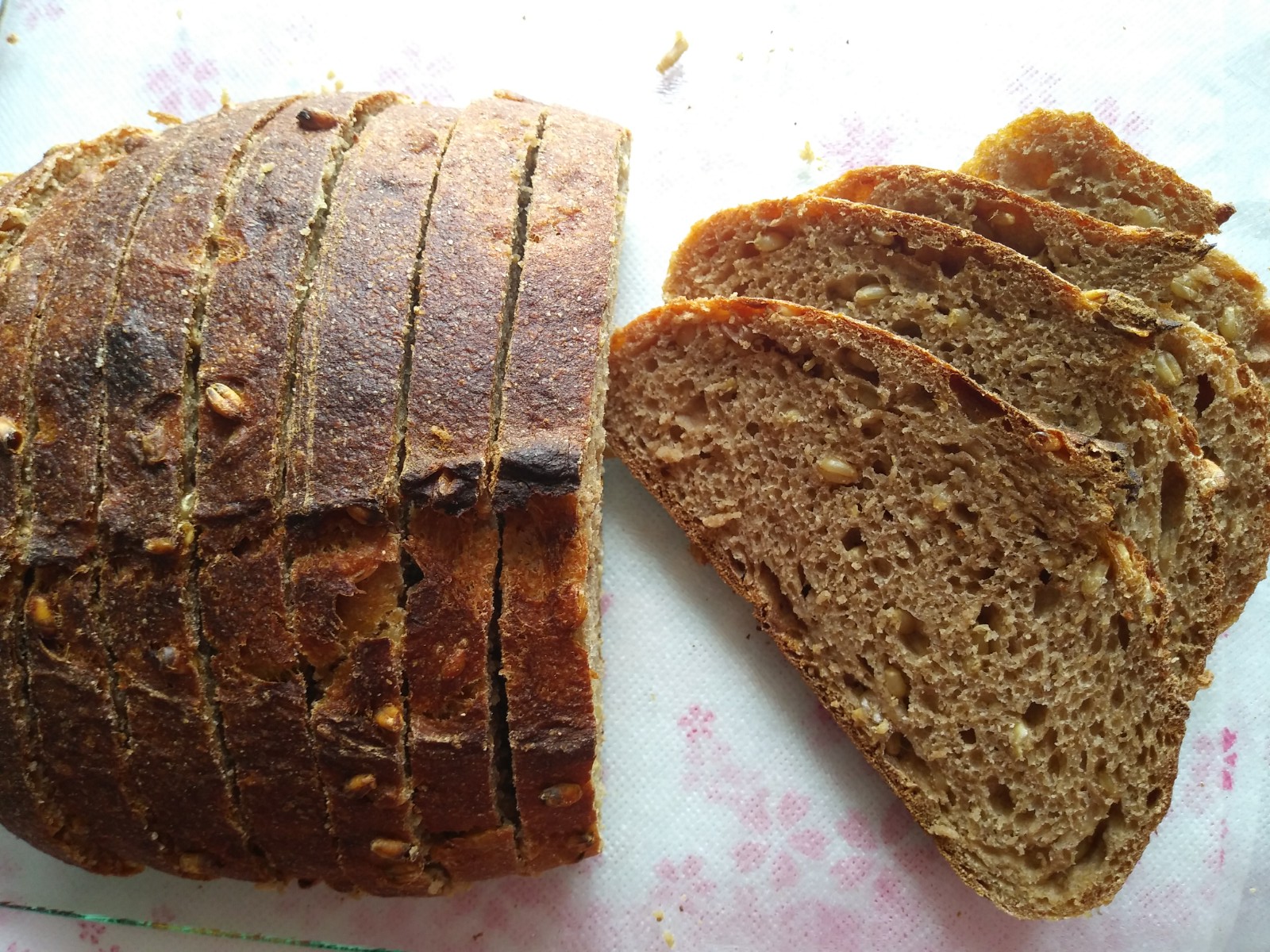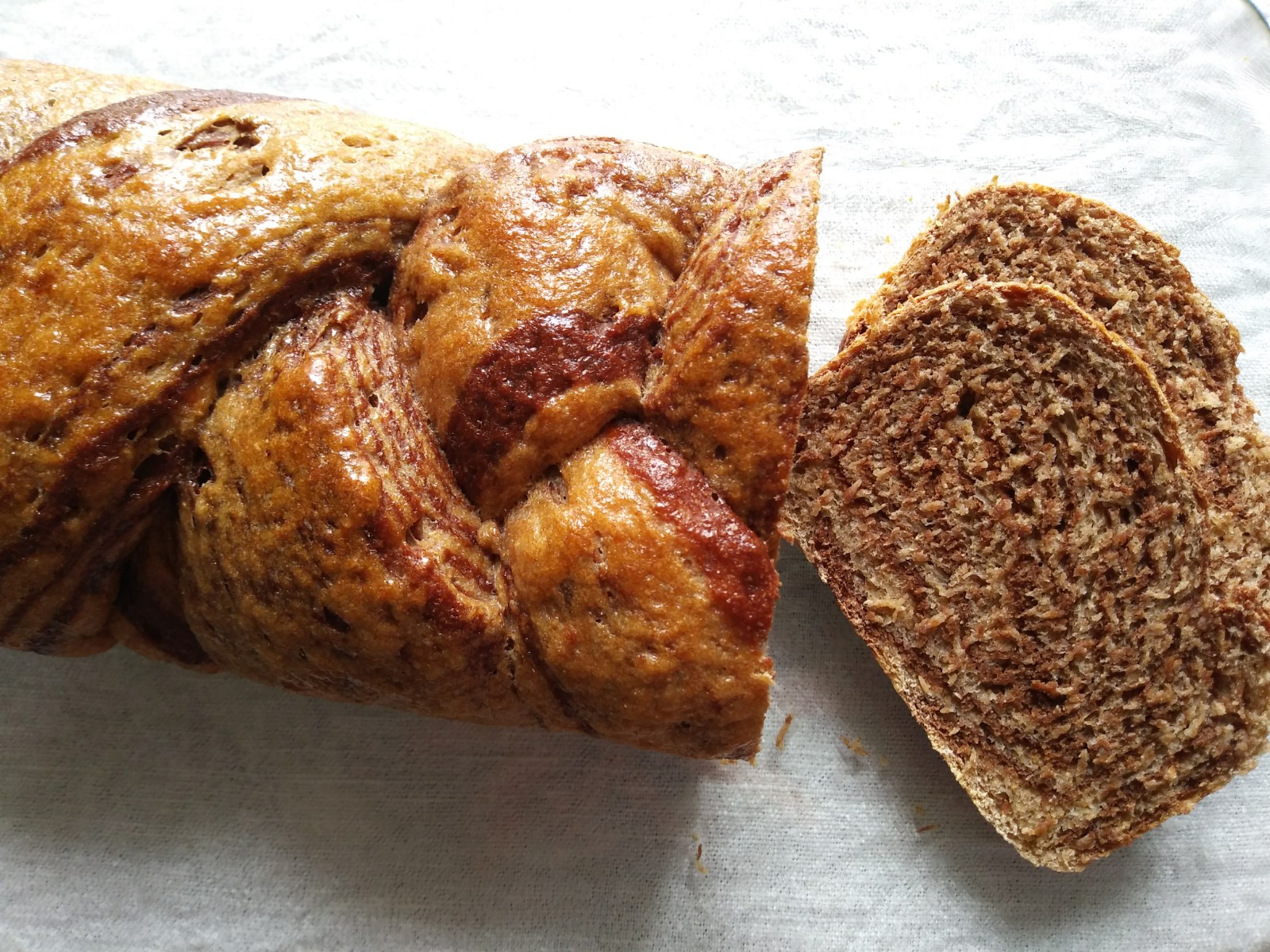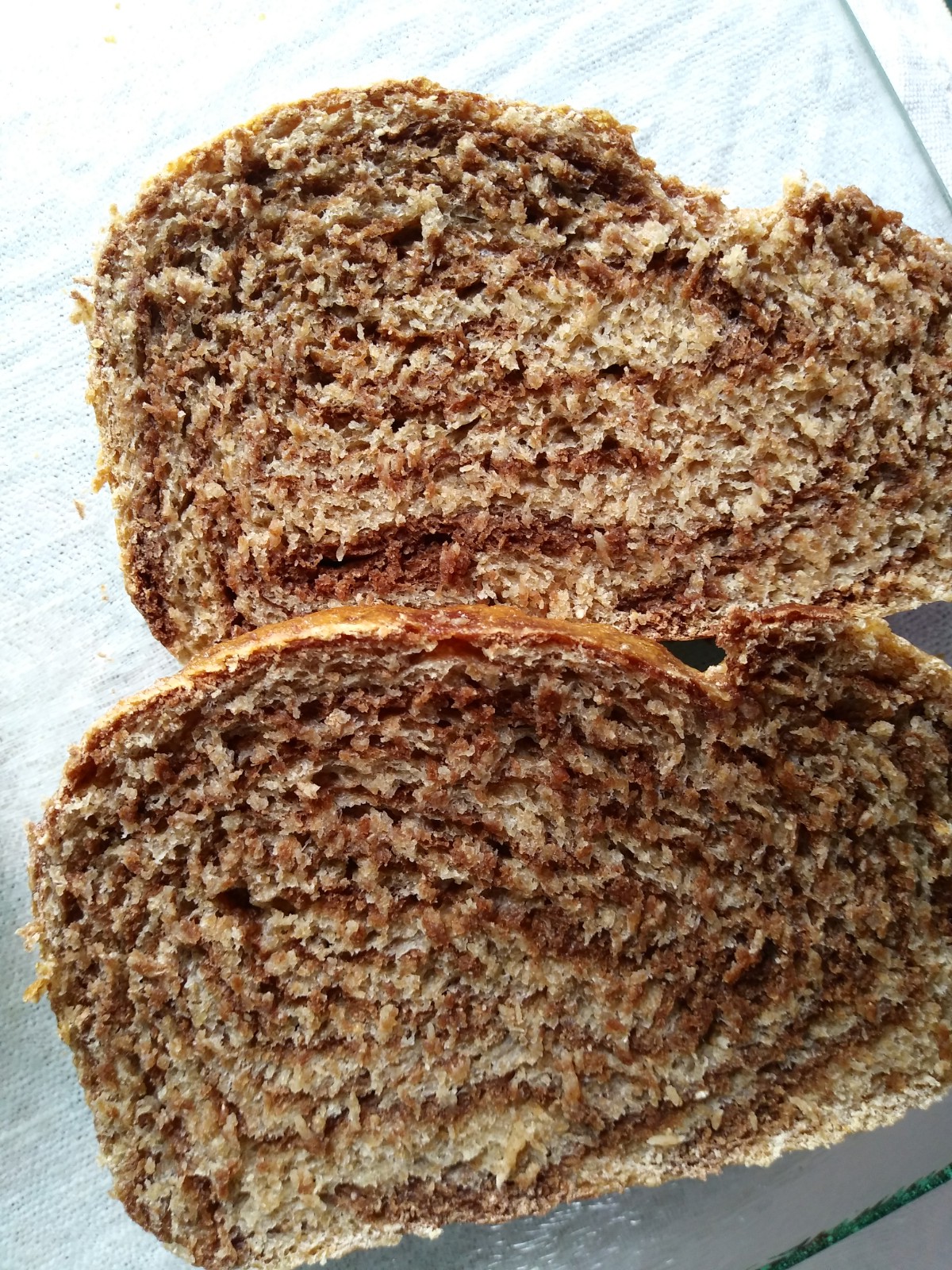Finally! The white wheat berries are back in stock! I bought a bag of it and decided to put it into use immediately by sprouting and milling it into flour. Not sure how it would affect the dough, I started out at a low percentage of 20% sprouted flour.


The berries were sprouted and dried a few days ahead but freshly milled (using the newly bought coffee grinder) on the day the leaven is built. The first thing I noticed is the smell of the flour. Its scent is divine! I have never smelled anything like that before. Though I enjoy the aroma of bagged whole grain flour, it is by no mean comparable to freshly milled sprouted flour. I now regret starting to mill my own sprouted flour so late but I guess it’s better late than never!

20% sprouted white wheat sourdough
Dough flour:
60g 20% Freshly milled sprouted white wheat flour
240g 80% Whole red wheat flour
For leaven:
10g 3% Starter
10g 3% Bran shifted out from sprouted flour
10g 3% Whey
For dough:
290g 97% Dough flour excluding bran for leaven
275g 92% Whey
30g 10% Leaven
10g 3% Vital Wheat Gluten
6g 2% Salt
Add-ins:
45g 15% Whole sprouted white wheat berries
______________
310g 100% Whole grain
290g 94% Total hydration
Shift out the coarse bran from the dough flour, reserve 10g for leaven. Mix the rest back into the dough flour or soak them in equal amount of whey taken from dough ingredients for a minimum of 4 hours.
Combine all leaven ingredients and let sit until doubled, about 9 hours.
Roughly combine all dough ingredients and let ferment overnight for 12 hours. Fold in the sprouted wheat berries and let the dough rest for 20 minutes. Construct 3 sets of stretch and fold over a 1.25 hour proofing period (20+30+25), shape the dough after the last set of stretch and fold and let rise untouched for 25 minutes (part of the 1.25 hour). At the same time, preheat the oven at 250°C/480°F and pre-steam at the last ten minutes.
Score the dough and bake at 250°C/480°F with steam for 15 minutes then without steam for 20 minutes more or until the internal temperature reaches a minimum of 205°F. Let cool for at least 3 hours before slicing.

The crust is thin and browned nicely, which I think had something to do with the sugar of the sprouted wheat flour. The scoring was not completely successful but the bread still had decent oven spring.

I thought this bread would be slightly drier than other bread I baked due to the lower hydration (I usually aim for 100% for whole wheat) and the sprouted flour. However, to my surprise, the crumb is actually moister and softer than those without sprouted flour. You can hardly relate it to the dry and coarse texture people often associate whole wheat with. Considering the presence of sprouted wheat berries, the crumb is fairly open too.

I left out the dark barley malt this time as I didn’t want it to mask to flavour of the sprouted flour. The bread tastes a bit different from the previous ones. It is subtle and difficult to describe but the sprouted flour gives it a kind of fresh note, making the bread more complex in general. Next time, I’ll definitely up the % of sprouted flour so that its aroma would be more pronounced.
________
This is an inspired bake a few days ago after reading Dabrownman’s post of tang zhong Hokkaido bread.

Mixed flour Tang zhong chocolate marble bread
For tang zhong:
40g 14% Whole spelt flour
200g 71% Water
12g 4% Brown sugar
15g 5% Honey
24g 8.5% Dry whole milk powder
For ‘white’ dough and chocolate dough:
141g 50% Whole wheat flour
113g 40% Whole spelt flour
28g 10% Dark rye flour
60g 21% Water
4.7g 1.7% Instant yeast
10g 3.5% Vital Wheat Gluten
2.5g 0.9 % Salt
For chocolate dough:
14g 5% Unsweetened cocoa powder
14g 5% Water
For glaze:
12g 4% Brown sugar
5g 1.8% Water
______________
322g 100% Whole grain
260g 81% Total hydration (for ‘white’ dough)
Mix together the flour and water for the tang zhong and heat over medium-low, stirring continuously until thickened, about 3 minutes. Stir in the rest of the ingredients. Let cool to room temperature.
Combine the 60g of water for the dough with the tang zhong. Pour it over the rest of the dough ingredients and mix thoroughly. Divide the dough into two parts in the ratio of 2:1. Combine the cocoa powder and water under For chocolate dough and knead it into the 1/3 dough portion. Let both dough rest for 30 minutes. Knead both the dough until smooth and elastic, about 7 minutes for each. Let rise for 1 hour.
Flour the ‘white’ dough and stretch it lightly into rectangle (any dimension works). Sprinkle cocoa powder over the chocolate dough and stretch it into a rectangle with the same width but half the length of the ‘white’ dough. Place it onto one side of the white dough and fold the over half over it so that it is sandwiched between the two sides of the ‘white’ dough. Roll the dough out to the original size of the ‘white’ dough, and then cut it crosswise into two equal half. Put one half over the other with the cut side facing opposite directions. Roll out the dough again and repeat the above procedures for 2 more times. After layers of alternate dough are formed, roll the dough lengthwise to about 1.3 times the length of your bread pan. Cut it into three equal long strips of dough and braid them together. Put it into the pan and let proof for 1 hour. Meanwhile, combine the sugar and water for the glaze and preheat the oven to 350°F.
Bake at 350°F in the middle rack for 30 minutes or until the internal temperature reaches 190°F. Brush the sugar mixture over the hot braid and let cool for 50 minutes before slicing.

It tasted very mildly sweet so if you want, you can add some chopped chocolate or more sugar to make it more of a sweet treat.